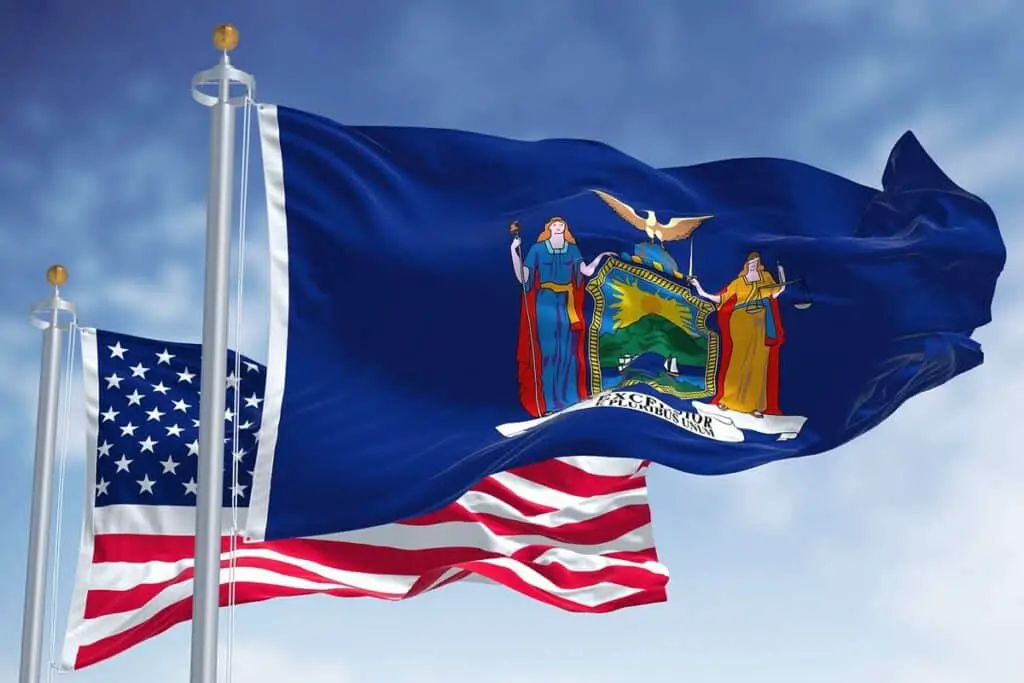Costs, Cremation Rates, Burial Trends, and Consumer Insights
Funeral trends in New York reflect the state’s high population density, cultural diversity, and complex regulatory environment. This article covers detailed funeral costs, cremation rates, burial trends, eco-friendly options, and important consumer protections with a focus on the latest statistics.
Average Funeral Costs in New York
Funeral costs in New York vary dramatically depending on region and service type.
Key statistics:
- The statewide average cost of a traditional funeral service ranges from $8,000 to $13,000 (source).
- Direct cremation typically costs between $1,500 and $4,000 (source).
- Cremation with a full service averages $5,000 to $8,000.
- In New York City, traditional funerals can exceed $15,000, among the highest costs in the nation.
For detailed pricing, visit Funeral Costs in New York. You can also Find a Funeral Home in New York.
Cremation Rates in New York
Cremation is now a common choice across New York State.
Key statistics:
- About 60% of New Yorkers choose cremation (source).
- Cremation rates are higher in urban areas like New York City, Buffalo, and Albany.
- Religious and cultural traditions still influence lower cremation rates in some communities.
For cremation pricing details, see What is the Cremation Cost in New York.
Burial Trends in New York
Traditional burial remains significant, especially among religious communities.
Key statistics:
- About 35–40% of New Yorkers still choose burial (source).
- Burial plot costs:
- Rural areas: $2,500–4,000
- Suburban areas: $6,000–8,000
- New York City: $15,000–20,000 or higher
- Jewish, Catholic, and Caribbean communities often continue traditional burial practices.
Growth of Eco-Friendly Funeral Options
Eco-conscious funeral practices are growing steadily across New York.
Key statistics:
- Green burials are growing at an estimated 10–12% annually (source).
- New York has over 12 certified green burial providers (source).
- Aquamation (alkaline hydrolysis) became legal in New York in 2022 (source), but availability is still limited.
Options include natural burial grounds, biodegradable caskets, and chemical-free services.
Death and Birth Rates in New York
Demographic shifts shape funeral service demand.
Key statistics:
- In 2022, New York recorded approximately 170,000 deaths and about 210,000 births (source).
- Death rate: about 8.7 deaths per 1,000 population
- Birth rate: about 10.7 births per 1,000 population
Funeral Type Preferences by Demographic Group
Funeral choices vary widely across New York’s diverse population.
Key insights:
- Younger adults (under 40): favor cremation or celebration of life events (source).
- Older adults: more likely to prefer traditional burial with religious rites.
- Jewish and Muslim communities: maintain strict burial traditions.
- Caribbean and Hispanic communities: often prefer large, traditional funeral gatherings.
- Non-religious individuals: often opt for direct cremation or informal memorials.
Consumer Protections for Funeral Services in New York
New York State enforces strong consumer protections.
Key points:
- Funeral homes must provide a General Price List (GPL) upon request (source).
- New York requires funeral homes to file pricing schedules with the state.
- Funeral directors must be licensed by the New York State Bureau of Funeral Directing.
You can verify licenses through the Bureau’s official site.
Summary: New York Funeral Statistics
| Category | Statistic |
|---|---|
| Average Traditional Funeral Cost | $8,000–13,000 |
| Average Cremation Cost | $1,500–4,000 |
| New York Cremation Rate | 60% |
| Traditional Burial Rate | 35–40% |
| Licensed Funeral Establishments | ~1,200 statewide |
| Most Expensive City for Funerals | New York City |
| Growth of Eco-Funerals | 10–12% annually (estimate) |
| Certified Green Burial Providers | 12+ statewide |
| Annual Deaths in New York (2022) | 170,000 |
| Annual Births in New York (2022) | 210,000 |
Helpful Resources
For more detailed information and planning assistance:
- Find a Funeral Home in New York
- Funeral Costs in New York
- What is the Cremation Cost in New York
- New York Green Burial Resources
- How to help funeral expenses help at the county level
- Charities That Offer Funeral Financial Assistance
Data Sources Statistics and information in this article were gathered from the National Funeral Directors Association (NFDA), the Cremation Association of North America (CANA), the New York State Department of Health, the New York State Bureau of Funeral Directing, the Green Burial Council, and other reputable sources as cited throughout.

